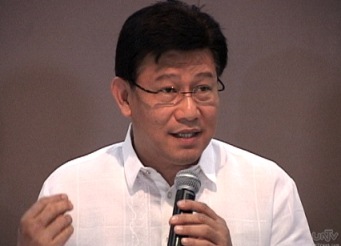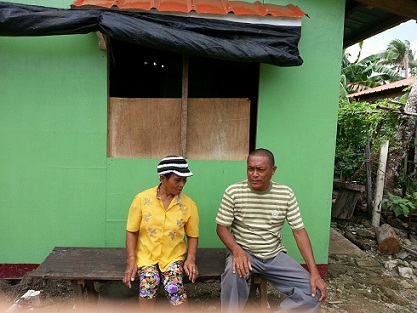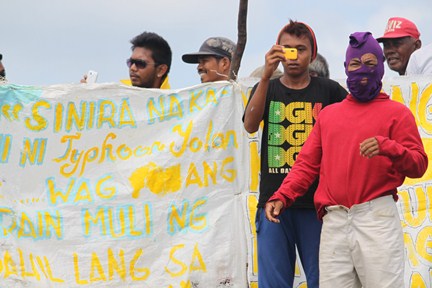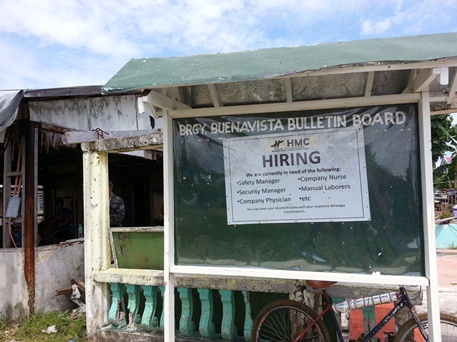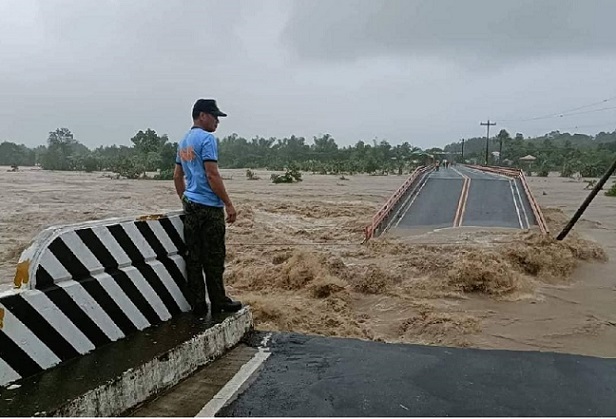
While browsing Facebook on Monday, I saw the Paliwan Bridge in Bugasong, Antique had collapsed. Its approaches were washed away so the bridge is now in the middle of a river- a scene that brings back childhood memories of my dangerous and arduous journey through raging rivers during the rainy season.
I called up my niece in Guisijan, a barrio in the town of Laua-an next to Bugasong, just a few kilometers from Paliwan Bridge. Our conversation was brief because electricity had not been restored and her power bank was draining. Nobody could cross the rampaging waters of Paliwan River, she said.
The distance between San Jose de Buenavista, the capital town of Antique – one of the four provinces (Antique, Iloilo, Capiz and Aklan) in Panay island – and Guisijan is about 50 kilometers, crossing at least five rivers. I’m not sure about the exact number of rivers. Some may only be brooks (sapa) but they are all spanned by bridges, some short and others long.
The three known long bridges in Antique are Sibalom Pampang Bridge, made infamous by the ambush and killing of nine supporters of the late Evelio Javier, former Antique governor, on the eve of the 1984 parliamentary election; Cangaranan Bridge, also in Bugasong; and, Paliwan Bridge.
Those bridges are now made of concrete; they used to be made of wood. Walking on those wooden planks when buses were unable to cross the river was always a scary experience for me.
Washed away bridge approaches were a common occurrence during storms and typhoons. A bridge in the middle of a river was a common sight in Antique.
Traveling was an ordeal. We would take the bus up to one river bank, take a boat or ride on a raft, and take another bus on the other side of the river. The ordeal was repeated once we reached the next river. What usually was a one-hour bus ride had become a six to eight-hour agony on the road.
One can imagine the effect of this disturbance on the economic life of the people. Aside from the scarcity of goods, prices were tripled, even tenfold.
Antique roads, with countless potholes, were “abortion highways.” During the dry season, a bandana was a necessary accessory because of the dust that could turn your hair from black to white-gray.
In the past 15 to 20 years, traveling in Antique has greatly improved. Roads had been asphalted or cemented (although there are places where there’s a gap between cemented roads, making us suspect that part of the budget went to some people’s pockets).
Antique was hit hard by typhoon Yolanda in November 2013. After that, if I remember correctly, Antiqueños had a respite from damaging storms and typhoons. Until Paeng came last weekend.
Antique Gov. Rhodora Cadiao said in an interview on GMA-7 last Monday that she did not expect the province to be severely affected because it was not the center of the storm. She reported that Paeng left nine people dead. “Grabe talaga ang ulan (the rain was heavy),” she said, adding that there were places which experienced flooding for the first time.
As we are confronted with the loss of lives and damage to infrastructure and crops due to storm Paeng, we should be reminded that rain does not kill people. Do you know of anybody who died because of the rain?
Mahar Lagmay, executive director of the University of the Philippines Resilience Institute and the driving force behind Project Noah (Nationwide Operational Assessment of Hazards), said, “Rainfall is not a hazard.”
But, Lagmay said, somebody needs to translate that rainfall amount in the future into hazard maps that will be used by communities to adapt to climate change.
Cadiao’s lament was exactly what Lagmay shared with VERA Files in an interview last Friday, hours before Paeng came.
“Hindi ba kapag nagkakaroon ng mga disaster, tapos may biktima na iinterbyuhin ng media, ano ba sinasabi ng mga tao? Hindi ba commonly, sinasabi nila ay: ‘First time nangyari ito. Hindi pa binabaha dito dati. Ngayon lang namin nakita ito. Ngayon lang kami nakakita ng ganito kalaking storm surge. Ngayon lang kami nakakita ng ganito kalaking baha. Hindi pa nagkakaroon ng landslides’.”
(Isn’t it that whenever there’s a disaster, when a victim is interviewed by the media, what do they say? Commonly, they say: ‘It’s the first time that this has happened. This place had not been flooded. We experienced it just now. It’s only now that we saw that huge storm surge.
It’s only now that we saw such massive floods. Never have we had landslides.)
Lagmay said: “It only tells us that, aba, we failed to anticipate. ‘Yun lang ang (That’s the) collective meaning nun, eh. Bakit lahat ‘yan sinasabi nila na ngayon lang (Why are they all saying), first time, first time. It only tells us that we failed; they failed to anticipate the bigger event than what they have experienced.
“And that also tells us that we need really to change it to prepare for the bigger impacts. The impacts that will be brought about by climate change; those that are predicted by climate scientists from all over the world that can happen in the future … and it may be happening now.”

